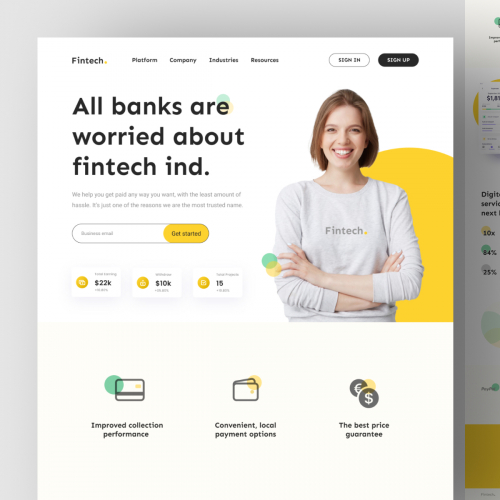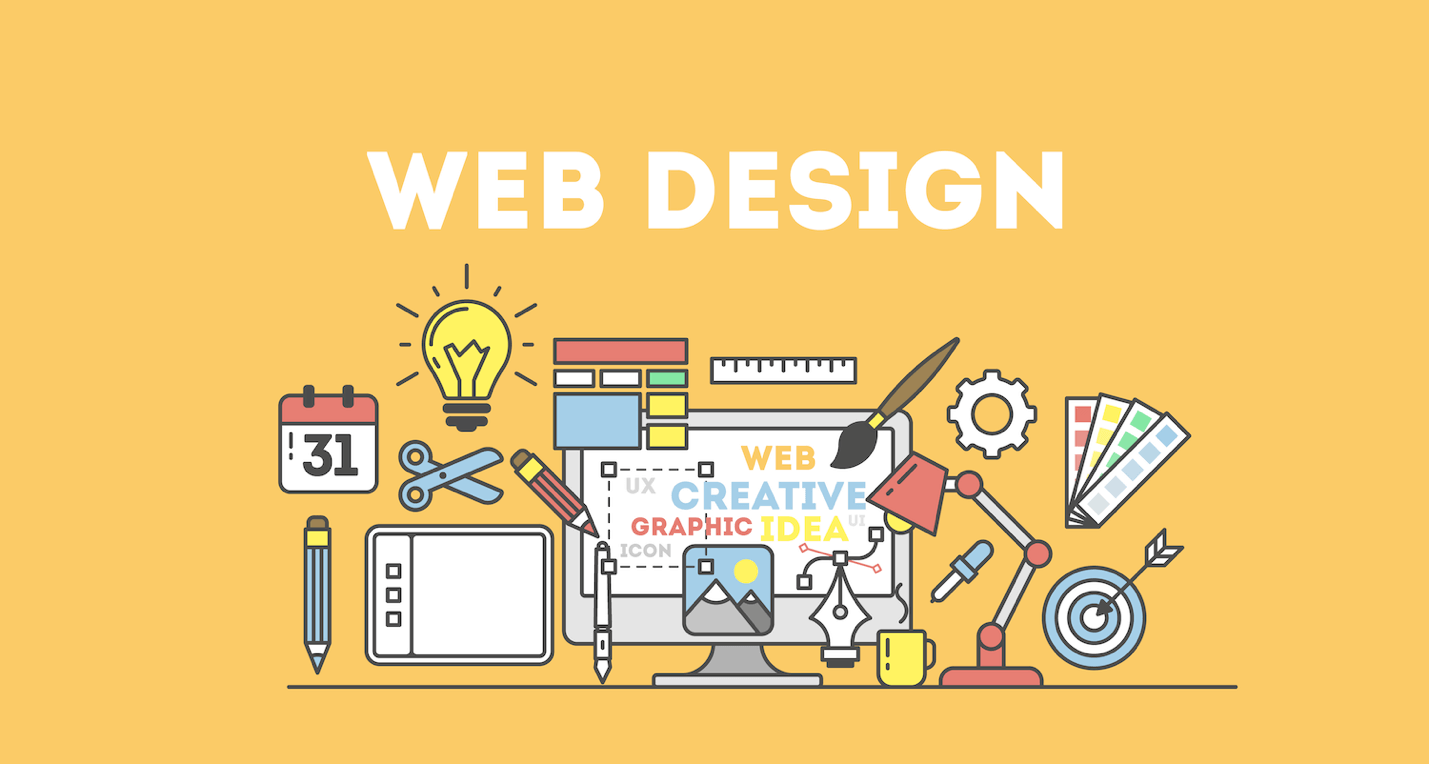Key Approaches for Applying User-Centric Site Layout to Boost Involvement
When taking into consideration the implementation of user-centric site design, specific methods are instrumental in improving engagement. Thorough study into individual requirements and preferences forms the structure, assisting the development of user personas to educate style choices. Personalizing web content improves user contentment, and durable ease of access features expand reach.
Understanding Customer Requirements
Understanding customer requirements is a basic action in the process of user-centric site design. This technique guarantees that the website straightens with the expectations and demands of its target audience, inevitably resulting in enhanced individual satisfaction and involvement. The initial stage involves carrying out comprehensive study to gather insights right into individual habits, preferences, and pain factors. Techniques such as studies, meetings, and user testing can supply valuable qualitative and quantitative information concerning how individuals interact with the site.
Examining this information permits developers to create comprehensive individual personalities that stand for the various sectors of the target market. These characters aid inform design decisions by highlighting specific user goals and challenges, guiding the development of features that address these needs effectively. Furthermore, comprehending the context in which individuals operate-- such as their environment, device choices, and time restrictions-- can additionally fine-tune the design approach.
Compassion plays a critical duty in this process, enabling developers to see the web site from the user's viewpoint. By prioritizing user demands, the style process comes to be a lot more focused, avoiding the inclusion of unneeded components that could mess the individual experience. Ultimately, a deep understanding of customer needs contributes in crafting an internet site that is both practical and meaningful.
Designing Instinctive Navigating
Having actually developed an extensive understanding of customer requirements, the following step in user-centric internet site style entails creating instinctive navigation. Efficient navigating is essential to customer fulfillment, affecting exactly how conveniently users can discover details and total jobs. To achieve user-friendly navigating, developers should focus on simplicity and quality, guaranteeing that the navigation framework is regular and logical throughout the site.
Organizing web content right into a clear pecking order is crucial. Website Design. The use of acquainted tags and symbols can guide users easily, lowering cognitive load and enhancing the general customer experience. A properly designed navigation bar ought to be prominently placed, enabling individuals to determine their present place and conveniently check out other areas of the internet site
It is also essential to integrate interactive components such as breadcrumbs and search performances to aid users in navigating complex sites. These features offer extra paths and enhance the access of web content, satisfying numerous user choices and actions.
Testing navigation with real customers is important to identify possible pain points and ensure capability lines up with user assumptions. Normal comments loops and repetitive enhancements can help keep an efficient navigation system that adjusts to advancing user demands, inevitably increasing engagement and complete satisfaction.
Creating Receptive Interfaces
Usually, producing responsive user interfaces is an essential element of modern-day internet design, making certain that web sites are available and useful throughout a multitude of gadgets and screen sizes (Website Design). This flexibility is important in a landscape where customers gain access to web content through smart devices, desktops, laptop computers, and tablet computers, each with varying resolutions and positionings. The primary goal of responsive layout is to enhance individual experience by keeping optimum readability and usability, despite the gadget made use of
To achieve this, web designers utilize adaptable grid formats, liquid images, and CSS media queries. Versatile grids enable web site aspects to resize proportionally, while fluid photos ensure visuals scale Check Out Your URL properly without losing high quality. Media questions play an important duty by applying various styles based upon the device's characteristics, such as positioning, width, and height, thus customizing the format to the customer's display.
Moreover, responsive interfaces add to boosted seo (SEARCH ENGINE OPTIMIZATION) by using a smooth user experience, which in turn can reduce bounce prices and boost site engagement. In recap, taking on receptive style is not merely a technological factor to consider however a necessary approach for promoting a user-centric web setting that fulfills the requirements of a diverse audience.

Individualizing Content Experience
Personalizing content experience is a crucial component of user-centric site design that involves tailoring content to fulfill the one-of-a-kind choices and habits of private users. This method not only internet enhances customer contentment yet likewise promotes deeper involvement, as visitors are most likely to connect with web content that resonates with their requirements and interests. By leveraging information analytics and customer comments, businesses can recognize patterns and fads that notify the customization of internet content.
Incorporating customization techniques can vary from basic modifications, such as recommending items based on surfing history, to extra innovative methods like dynamic web content that adapts in real-time to a user's communications. As an example, individualized landing pages can considerably increase conversion prices by offering customers with relevant details and offers that line up with their previous activities and choices.
Additionally, making use of man-made knowledge and device discovering can further fine-tune material customization by continuously discovering from user behaviors and adapting to arising fads. This not only enhances the individual's trip yet also develops brand commitment, as clients really feel understood and valued. Eventually, customizing the web content experience is an important method for organizations intending to produce a much more interesting and purposeful interaction with their audience.
Enhancing Ease Of Access Functions
Enhancing accessibility features is an essential facet of user-centric internet site layout, ensuring that digital content is usable by everyone, including individuals with disabilities. This approach not just adheres to lawful criteria such as the Americans with Disabilities Act (ADA) and the Internet Material Ease Of Access Guidelines (WCAG) but also considerably broadens a web site's target market reach. By integrating features like key-board navigating, display reader compatibility, and alternative message for pictures, sites become more comprehensive, supplying a seamless experience for users with aesthetic, acoustic, or motor problems.
Including responsive layout components is vital, helping with access on numerous gadgets and screen dimensions, thus accommodating customers with different choices and requirements. Comparison proportions and text dimension modifications can enhance readability for people with visual obstacles. Supplying succinct and clear content framework, such as listings and headings, aids understanding and navigating, especially for customers with cognitive impairments.
Regular availability audits should be carried out to identify and remedy possible barriers, making sure ongoing compliance and functionality. By focusing on ease of access, services not just foster inclusivity but likewise boost overall individual involvement and complete satisfaction, inevitably driving higher conversion rates and reinforcing brand loyalty.

Conclusion
Including user-centric design approaches substantially enhances web site involvement by prioritizing the demands and preferences of individuals. Comprehensive research assists in the creation of customer personas, assisting targeted layout decisions. User-friendly navigating and responsive user interfaces boost usability and access across gadgets. Individualizing content based on customer actions enhances fulfillment, while robust ease of access functions increase audience reach. Collectively, these techniques develop a significant on-line experience, cultivating much deeper engagement and interaction with the web find out this here site.
Complete research study right into individual requirements and preferences develops the foundation, guiding the creation of user personas to educate layout selections. Methods such as surveys, interviews, and user screening can give beneficial qualitative and measurable information regarding how individuals communicate with the website.
By focusing on customer requirements, the design procedure ends up being more concentrated, preventing the addition of unneeded elements that might clutter the customer experience. Reliable navigation is essential to customer contentment, affecting exactly how easily customers can discover information and full tasks. The usage of acquainted labels and symbols can direct users easily, decreasing cognitive load and boosting the overall customer experience.